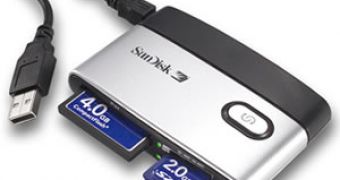Nowadays computers use frequently several types of memory, from the main system memory called RAM (from random access memory) that has several generations, to video memory inside graphics cards, flash memory chips for external data storage and SSDs - solid state drives. These are the most frequently met memory types so manufacturers and computer users have sometimes a hard time figuring exactly what is computer memory.
Things could be very different if all computer memory standards - how many are out there, by the way? - could somehow be reduced to a single standard, an "one size fits all" approach that could take prices down and performance up. Over the years, several universal computer memory solution have been proposed, but not even one of them could satisfy all the necessary requirements to make it work as RAM, VRAM, NAND and so on. Well, the last company to undertake such a task is called Grandis that developed yet another type of computer memory named Spin-Transfer Torque RAM (STT-RAM for short). While the technology still has a long way to go, the manufacturing company already made sample chips and memory modules and they say that customers will see the universal computer memory on the market beginning next year.
The universal computer memory works on a very simple principle, as Grandis simply placed a tiny magnet on top of a transistor and capped it with some sensitive material, so when an electric current is applied there are two possible ways for the current to run. Going from bottom to top the current meets a high resistance and that would register as a "1", while going from one side to another will be considered a "0". "It is the cheapest solution out there for universal memory," said Farhad Tabrizi, Grandis chief executive officer during a presentation at the Flash Memory Summit this week. "It is basically a transistor plus a magnet."
As this new memory technology can be used on already existing memory production lines, with only two additional steps and with low upgrading costs, it may very well have a field day as other flash memory standards are coming to a halt because of increasing development costs. According to the Grandis CEO, the first application of the new memory will be in airbags, where it will replace the SRAM-NOR memory structure, then the next target is the mobile computing segment.

 14 DAY TRIAL //
14 DAY TRIAL //